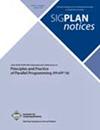FirmUp
Q1 Computer Science
引用次数: 14
摘要
我们提出了一种静态、精确和可扩展的技术,用于在剥离固件映像中查找cve(常见漏洞和暴露)。我们的技术能够在真实世界的固件中以高精度有效地发现漏洞。给定可执行二进制文件中的一个易受攻击过程和包含多个剥离二进制文件的固件映像,我们的目标是检测固件映像中可能出现的易受攻击过程。由于供应商使用的各种架构和独特的工具链,以及固件的高度定制性,在剥离固件中识别程序是极具挑战性的。漏洞检测不仅需要过程之间的成对相似性,还需要关于周围可执行程序中过程之间关系的信息。这一观察结果为一种新技术奠定了基础,该技术在两个二进制文件中的过程之间建立了部分对应关系。我们在一个名为FirmUp的工具中实现了我们的技术,并对从公共供应商固件映像中抓取的4种不同的流行架构的4000多万个程序进行了广泛的评估。我们发现了373个影响公开可用固件的漏洞,其中147个存在于设备的最新可用固件版本中。将FirmUp与之前的方法进行全面比较表明,它可以准确有效地发现固件中的漏洞,同时平均比现有技术的检测率高出45%。本文章由计算机程序翻译,如有差异,请以英文原文为准。
FirmUp
We present a static, precise, and scalable technique for finding CVEs (Common Vulnerabilities and Exposures) in stripped firmware images. Our technique is able to efficiently find vulnerabilities in real-world firmware with high accuracy. Given a vulnerable procedure in an executable binary and a firmware image containing multiple stripped binaries, our goal is to detect possible occurrences of the vulnerable procedure in the firmware image. Due to the variety of architectures and unique tool chains used by vendors, as well as the highly customized nature of firmware, identifying procedures in stripped firmware is extremely challenging. Vulnerability detection requires not only pairwise similarity between procedures but also information about the relationships between procedures in the surrounding executable. This observation serves as the foundation for a novel technique that establishes a partial correspondence between procedures in the two binaries. We implemented our technique in a tool called FirmUp and performed an extensive evaluation over 40 million procedures, over 4 different prevalent architectures, crawled from public vendor firmware images. We discovered 373 vulnerabilities affecting publicly available firmware, 147 of them in the latest available firmware version for the device. A thorough comparison of FirmUp to previous methods shows that it accurately and effectively finds vulnerabilities in firmware, while outperforming the detection rate of the state of the art by 45% on average.
求助全文
通过发布文献求助,成功后即可免费获取论文全文。
去求助
来源期刊

ACM Sigplan Notices
工程技术-计算机:软件工程
CiteScore
4.90
自引率
0.00%
发文量
0
审稿时长
2-4 weeks
期刊介绍:
The ACM Special Interest Group on Programming Languages explores programming language concepts and tools, focusing on design, implementation, practice, and theory. Its members are programming language developers, educators, implementers, researchers, theoreticians, and users. SIGPLAN sponsors several major annual conferences, including the Symposium on Principles of Programming Languages (POPL), the Symposium on Principles and Practice of Parallel Programming (PPoPP), the Conference on Programming Language Design and Implementation (PLDI), the International Conference on Functional Programming (ICFP), the International Conference on Object-Oriented Programming, Systems, Languages, and Applications (OOPSLA), as well as more than a dozen other events of either smaller size or in-cooperation with other SIGs. The monthly "ACM SIGPLAN Notices" publishes proceedings of selected sponsored events and an annual report on SIGPLAN activities. Members receive discounts on conference registrations and free access to ACM SIGPLAN publications in the ACM Digital Library. SIGPLAN recognizes significant research and service contributions of individuals with a variety of awards, supports current members through the Professional Activities Committee, and encourages future programming language enthusiasts with frequent Programming Languages Mentoring Workshops (PLMW).
 求助内容:
求助内容: 应助结果提醒方式:
应助结果提醒方式:


